- News
- Reviews
- Bikes
- Components
- Bar tape & grips
- Bottom brackets
- Brake & gear cables
- Brake & STI levers
- Brake pads & spares
- Brakes
- Cassettes & freewheels
- Chains
- Chainsets & chainrings
- Derailleurs - front
- Derailleurs - rear
- Forks
- Gear levers & shifters
- Groupsets
- Handlebars & extensions
- Headsets
- Hubs
- Inner tubes
- Pedals
- Quick releases & skewers
- Saddles
- Seatposts
- Stems
- Wheels
- Tyres
- Tubeless valves
- Accessories
- Accessories - misc
- Computer mounts
- Bags
- Bar ends
- Bike bags & cases
- Bottle cages
- Bottles
- Cameras
- Car racks
- Child seats
- Computers
- Glasses
- GPS units
- Helmets
- Lights - front
- Lights - rear
- Lights - sets
- Locks
- Mirrors
- Mudguards
- Racks
- Pumps & CO2 inflators
- Puncture kits
- Reflectives
- Smart watches
- Stands and racks
- Trailers
- Clothing
- Health, fitness and nutrition
- Tools and workshop
- Miscellaneous
- Buyers Guides
- Features
- Forum
- Recommends
- Podcast
TECH NEWS
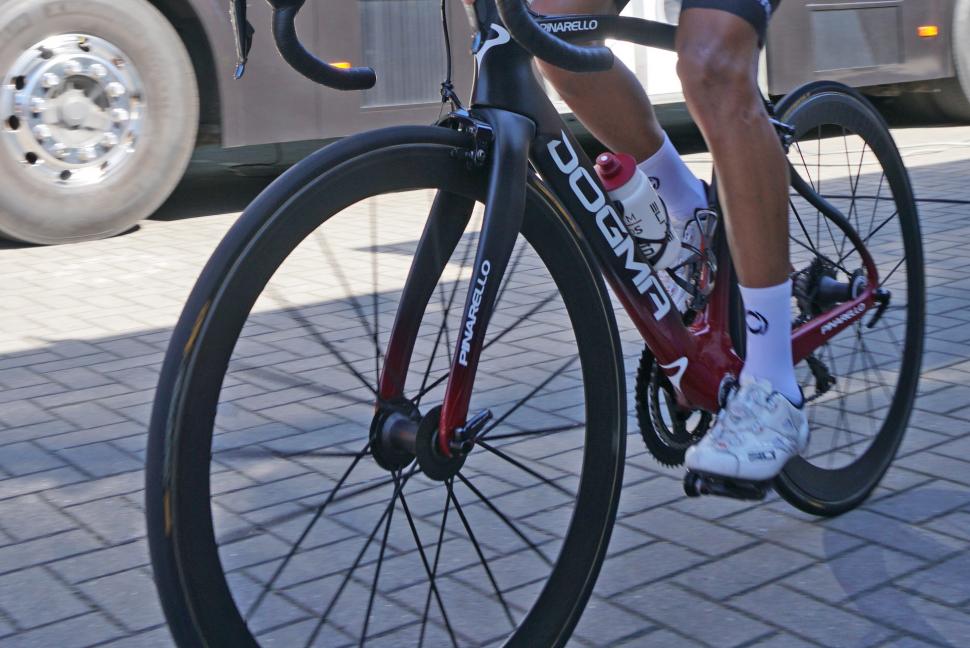 team ineos riding2 copy.JPG
team ineos riding2 copy.JPGExclusive: Team Ineos riding Lightweight wheels at Tour de France. Team confirms use of two wheel brands at the race
We spotted several Team Ineos riders using Lightweight carbon fibre wheels instead of their usual Dura-Ace wheels on a training ride just days before the 2019 Tour de France got underway in Brussels.
We don't have any confirmation from Team Ineos or Lightweight wheels about this but we have contacted them both. We spotted three riders - Egan Bernal, Luke Rowe and Jonathan Castroviejo - going out for a penultimate training ride on the wheels. When it came to photographing a Team Ineos Pinarello for an upcoming bike check feature and video, the Lightweights were unsurprisingly nowhere to be seen.
Asked about the use of the Lightweight wheels, Team Ineos has told road.cc:
"We can confirm we will use wheels from two brands during this year’s Tour. Shimano remains our main supplier and they are a valued partner for Team INEOS."
The German company is famous for making some of the lightest wheels. The Meilenstein Obermayer is the wheel we suspect the team is using and is the lightest in the company’s range, weighs just 935g a pair (395g front, 540g rear).
The wheels were and are still unique for their all-carbon construction. The hub shells with their telltale tall flanges, the spokes and rims are entirely made from carbon fibre. But Lightweight wheels haven’t been spotted in the professional peloton in a long time, largely because of sponsors providing wheels that are very light, and because the small German company has reportedly never sponsored a team.
So we suspect Team Ineos has bought the wheels. That wouldn’t surprise us, we've seen the team using non-sponsor kit in the past and choosing to buy equipment rather than rely on sponsorship as it provides the freedom to choose the bit products that meet their high standards.
We’ve seen the team using special wheels in the past though. When Bradley Wiggins won the 2012 Tour de France he was spotted using a special set of lightweight climbing wheels. The wheels featured super lightweight Tune hubs, another German specialist in lightweight cycling components, paired with HED S3 carbon tubular rims.
But we can't remember the last time Lightweights were spotted. You have to go back to the 1990s when Lightweight wheels were very special and only spotted on the bikes of the best riders. This was also a time when most regular wheels weren’t especially light, so the 1kg weight of the Lightweights made them extraordinary. Jan Ullrich races a pair in 1997 when he won the Tour de France and Lance Armstrong also used them a few years later.
We reviewed the regular Meilenstein tubular wheels and said “Incredibly light and stiff carbon wheels with exceptional performance, but the price makes them unattainable for nearly all.” You’re talking about £3-4k a set is clearly small change for the best-funded team in the pro peloton.
Why would Ineos being using rare ultralight wheels? We're guessing it's to ensure the bikes are right on the UCI 6.8kg weight limit for some of the tough mountain stages in this year's race, which rather raises the question of weren't the bikes already on the weight limit?
Or maybe the team have decided to cut the weight of the wheels as much as possible and reallocate weight elsewhere on the bike? There has always been a lot of debate about the impact of rotating mass. “An ounce off the wheels is worth a pound off the frame,” goes the old saying, implying that rotating weight, especially on the wheels, is supremely important.
Problem is, it’s not true. In 2001 bike engineer Kraig Willett analysed the forces on wheels(link is external) and concluded: “When evaluating wheel performance, wheel aerodynamics are the most important, distantly followed by wheel mass. Wheel inertia effects in all cases are so small that they are arguably insignificant.”
Either way, we'll be watching the team very closely to see what wheels it is using during the Tour de France.
David worked on the road.cc tech team from 2012-2020. Previously he was editor of Bikemagic.com and before that staff writer at RCUK. He's a seasoned cyclist of all disciplines, from road to mountain biking, touring to cyclo-cross, he only wishes he had time to ride them all. He's mildly competitive, though he'll never admit it, and is a frequent road racer but is too lazy to do really well. He currently resides in the Cotswolds, and you can now find him over on his own YouTube channel David Arthur - Just Ride Bikes.
Latest Comments
- quiff 26 min 53 sec ago
Less academic, but memorably encapsulated recently by Saoirse Ronan
- quiff 38 min 19 sec ago
Fascinating - I have always thought Hersheys has a whiff of vomit about it!
- Global Nomad 39 min 18 sec ago
good to see you're testing the farsports wheels - hope to see road.cc continue to expand the range of brands it considers. These or the shallower...
- chrisonabike 41 min 50 sec ago
Duly triggered! (At least "it's comedy!" though)....
- quiff 43 min 16 sec ago
Agreed, though those in thrall to the car lease would probably think the same of my coffee expenditure...
- chrisonabike 44 min 58 sec ago
Frustratingly we could probably avoid (most of) this if only one or two fundamental things were the other way around e.g. "you can only drive on...
- chrisotherwise 1 hour 12 min ago
Sadly very normal. And the sand contains loads of evil little shards of flint.
- David9694 4 hours 21 min ago
Random driver account: "cyclists should be made to wear hi viz like workers do on a building site"....
- quiff 4 hours 34 min ago
"The algorithm" served me an older JV video last week which I now can't get out of my head....
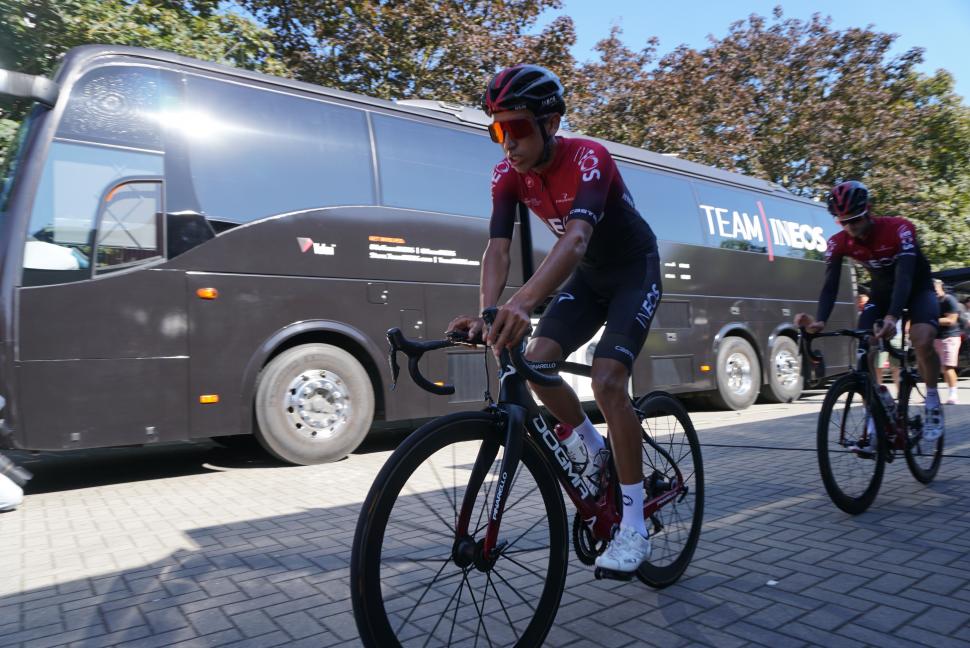

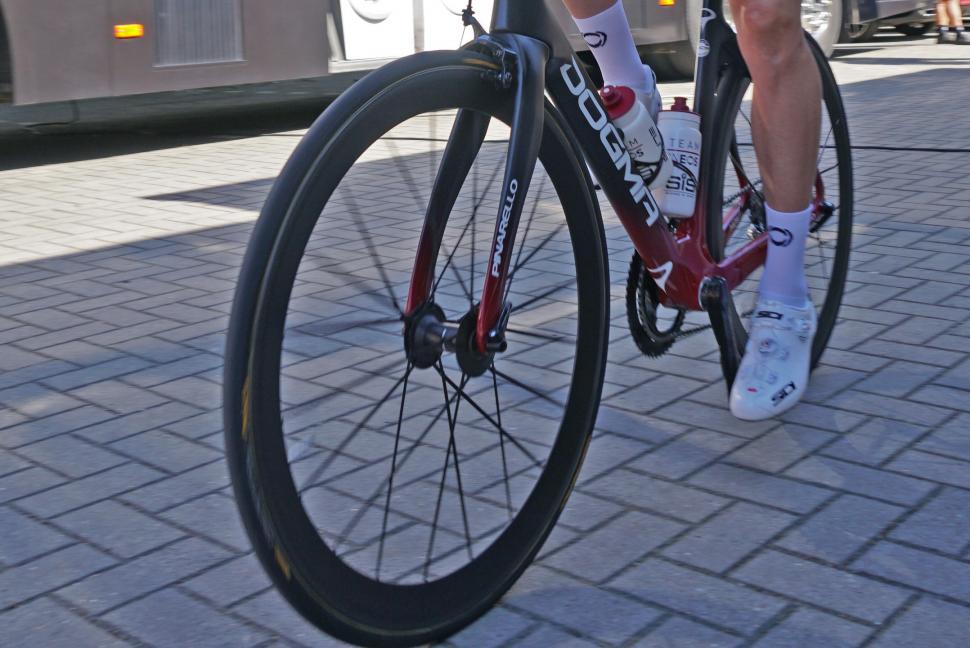
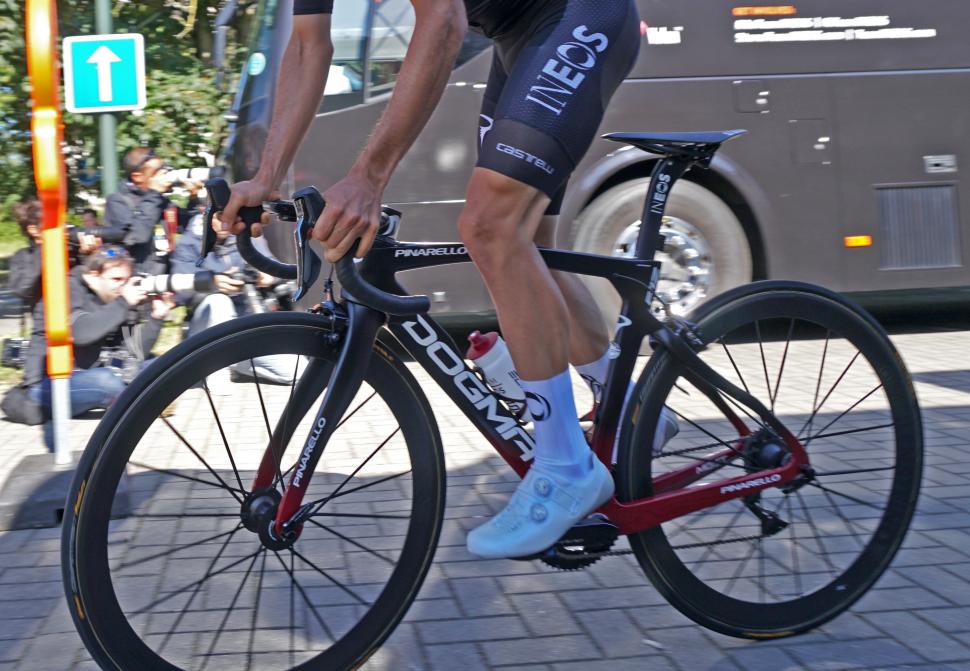
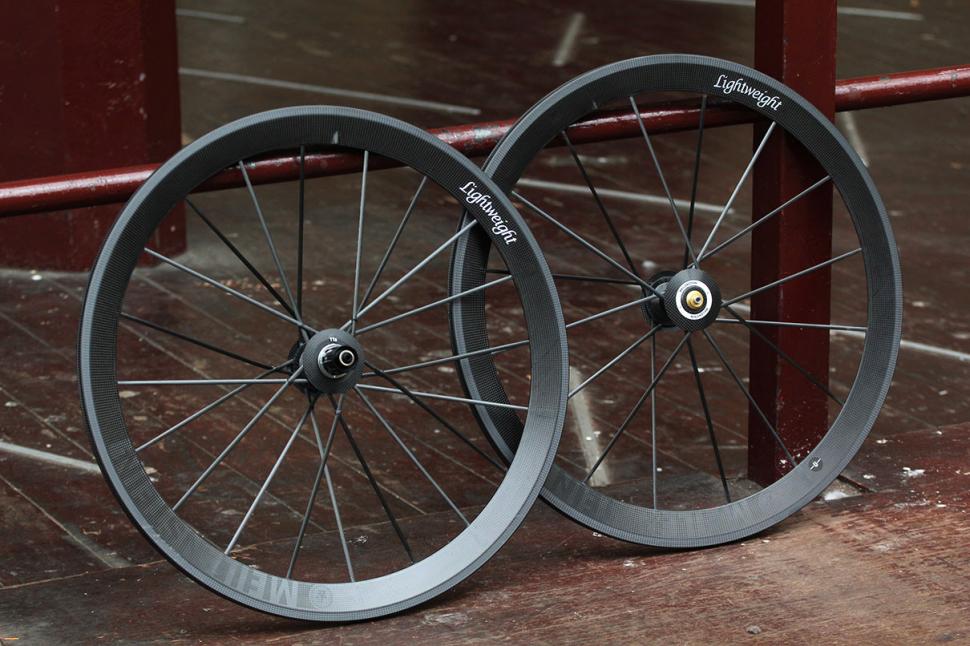
Add new comment
7 comments
I bought a pair of Lightweight Gen 3 Sprint tubular rims (extra strong version) years ago and despite being a heavy rider at around 100 kg, they are the most solid rims I have ever ridden. Whether on the flat or honking hard out of the saddle, I never feel any lateral movement and it is like every ounce of power is going straight to the tarmac!
I appreciate they are outside a lot of budgets (including mine now that I have kids) but if you ever get a chance to ride some, grab it and then you will understand why Team Ineos have them on their kit list!!
feeling amused at the Pub professors above and their speculation. Not grounded, formally educated and researched comment, just wot-eye-fink.
"The Meilenstein wheels from lightweight aren't considered to be that aerodynamic."
In regards of aerodynamic you have better and much cheaper options ranging from DT Swiss, Enve, AX Lightness and also Bontrager etc. But the company already mentioned that the Meilensteins will be used especially for climbing sections.
And like most of my "lightweight" sports gear, lightweigt stuff tends not to be very durable over a long period of regular use. Meilenstein C Disks were tested with some serious issues back in 2017 . So riding over a pothole could destroy your expensive lightweight rim. The company claimed to have fixed this issue with the next 2018 generation, but I do not now of any published crash tests with lightweight rims after this.
In this sense, an expensive Lightweight rim is not the ultimative wheel for your bike or a certain lifestyle as some rich old white men want you to believe, but due to the low weight, good for climbs (at the expense of aerodynamics and stability).
On the face of it this seems like a very odd choice. The Meilenstein wheels from lightweight aren't considered to be that aerodynamic.
The carbon spokes run directly into/onto the rim profile. It's a big part of what makes them so light and stiff but it also means that the rim profile is somewhat tied to the angle of the spokes. This means that they're a very pronounced sharp 'v' shape rather than the toroidal shape that most modern aero rims follow. I think Lightweight even go so far as to say that they're not an aero rim. One might guess that they'd be especially poor at reasonable yaw angles.
It's not 100% clear from the footage (at least to my eye). These could be some fancy new design that has the best of everything... ...but they do look like the classic Meilenstein shape.
Yes, it seems quite counterproductive. And LW don't sponser anybody so the company/personal credit cards have been getting a pasting!
“When evaluating wheel performance, wheel aerodynamics are the most important, distantly followed by wheel mass. Wheel inertia effects in all cases are so small that they are arguably insignificant.”
I confess I have not read the piece referred to. The conclusion seems obvious considering how much energy goes into overcoming wind resistance compared to the kinetic energy acquired by the bike, over the distance of a race. However it seems to my layman's eye that the difference between winning or not is often decided in the final sprint, when a fractional advantage in acceleration may make all the difference.
This is strange that nobody has questioned this research. To me it seams lacking common sense... let me explain.
I agree that when you are going flat out at high speeds light weight does not matter, aerodynamics do. But when you are going up a steep hill at 10mph aerodynamics do not matter.
When you are pedaling out of saddle you accelerate and decelerate your bike with each and every pedal stroke. When you consider that your wheels (both of them) are flywheels, it is clear to see that there is additional expenditure of energy to micro-accelerate them with every pedal stroke. That must be less effective than application of continuous smooth power.
So, maybe they are on to something after all...